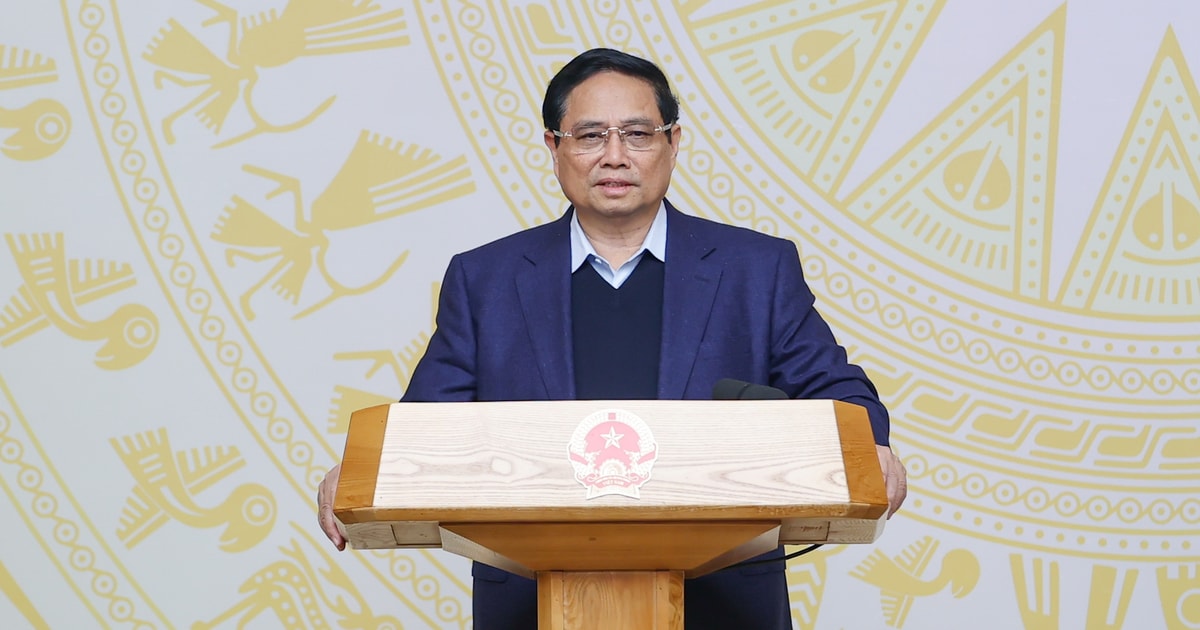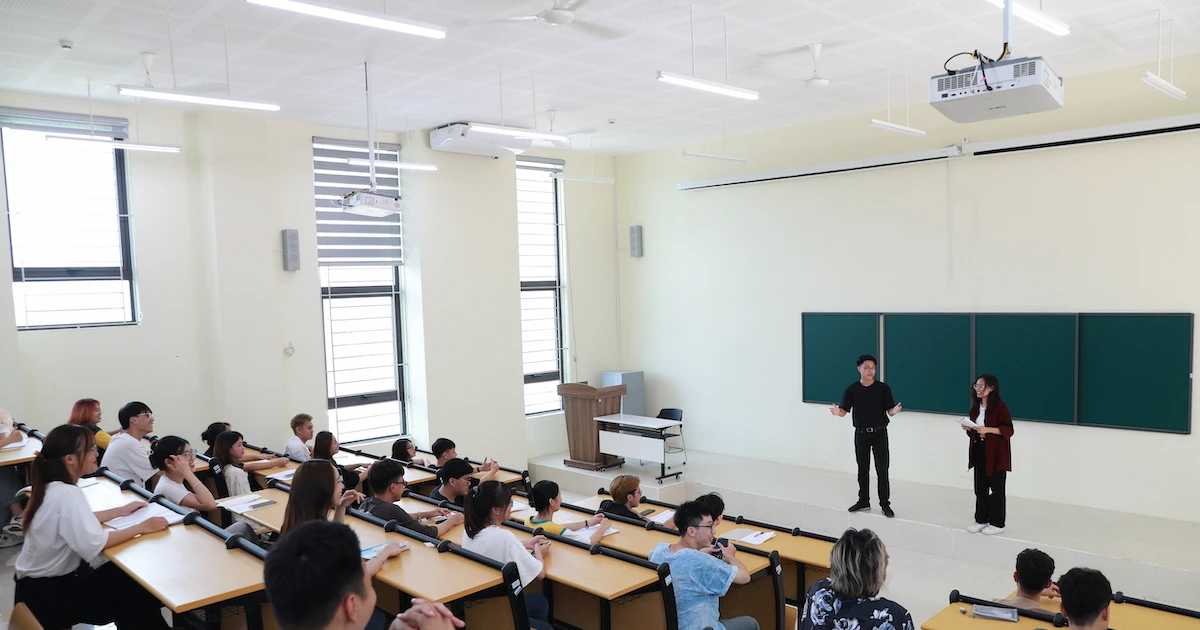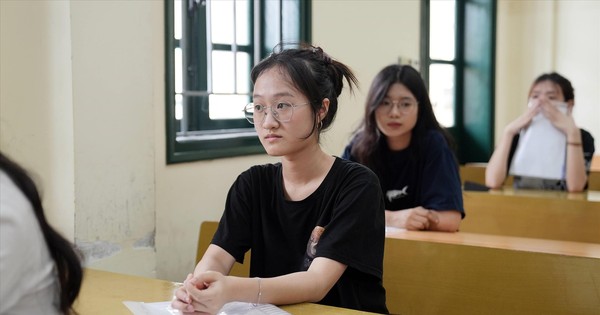The market is thirsty for microchip design human resources, but universities find it difficult to rapidly increase training scale due to lack of teachers and expensive software, worth millions of dollars.
In early September, FPT University and FPT Semiconductor Joint Stock Company announced the establishment of the Semiconductor Microchip Department, expected to welcome students from next year.
At the same time, Hanoi University of Science and Technology opened a major in Microchip Design, under the Electronics and Telecommunications Engineering department. Students from the fourth year can choose this major to study the following subjects: Embedded systems and embedded communication design, Microelectronics technology foundations, VLSI large-scale integrated circuit design, Analog IC design, Microchip verification and testing.
At Ho Chi Minh City University of Technology, in addition to the major of Microcircuit Design in the Electronics - Telecommunications industry, from 2021, the school will open a major of Circuit Design - Hardware, taught in English.
Training facilities said they want to provide in-depth training in microchip design to satisfy the "thirst" of the human resources market.
Vietnam is now playing an important role in the global semiconductor industry. The Ministry of Information and Communications said that the semiconductor industry in Vietnam needs 10,000 engineers each year, but the current workforce only meets less than 20%.
To make a chip, there are three basic steps: design, manufacturing and packaging. However, Vietnam is currently focusing on design and packaging. Therefore, according to lecturers, the demand for microchip design engineers is very high.
Associate Professor Do Hong Tuan, Head of the Department of Electrical and Electronics, Ho Chi Minh City University of Technology, said that about 10 years ago, only 5-6 foreign companies working on microchips and semiconductors were present in Ho Chi Minh City, but now, this number is more than 50 and will increase rapidly.
Associate Professor Nguyen Duc Minh, Head of the Faculty of Electronics, Hanoi University of Science and Technology, predicts that in the near future, when many large companies such as Infineon, Renesas, Marvell, and Samsung open more offices and factories in the north, the demand for new IC design engineers each year will be about 250-300. According to a survey, new graduates of the IC Design major receive a starting salary of 15-20 million VND. After 5-10 years, they can receive three times as much. Many businesses even come to hunt for students from their second and third years.
However, each of these schools can only provide about 100-150 microchip design engineers per year. Experts say it is difficult to train en masse or increase the scale quickly.

Semiconductor Physics Laboratory of Ho Chi Minh City University of Technology. Photo: HCMUT
"There are not many teachers in this field in Vietnam, they are mainly in businesses," said Mr. Tuan. Moreover, schools also need to have good training programs because microchip design is just the "tip" of the Electronics industry.
Associate Professor Nguyen Duc Minh said that the school currently has 9 PhD lecturers, including 3 Associate Professors, who can teach and guide the Microchip Design major. With a scale of about 50 students per year, the school does not lack lecturers. However, if it wants to increase the scale, the current number of lecturers is only enough to train a maximum of 80 students. Another difficulty is that the lecturers do not have much investment funds for research, and lack of software and practical machines, so training is difficult to be close to the world.
Dr. Nguyen Tan Tran Minh Khang, Vice Principal of the University of Information Technology, Ho Chi Minh City National University, cited some additional reasons such as lack of synchronization in sharing and using industrial design software tools and IP cores to support training at schools; the connection between researchers and research groups is still loose.
In a discussion on the development of the IC Design program at Ho Chi Minh City National University in July, Dr. Vo Xuan Hoai, Deputy Director of the National Innovation Center, raised these opinions. He said that Vietnam does not have a national strategy for developing human resources for IC design. The ecosystem still lacks labs and design tools. Most schools do not have the financial capacity to invest in equipment and design support software worth millions of dollars.
Therefore, in the immediate future, the schools said they will focus on improving the quality of training. Hanoi and Ho Chi Minh City University of Technology said they will continue to closely cooperate with businesses, integrating the practical requirements of businesses into the content of practice, subjects, projects, and projects.

Student of Electronics and Telecommunications Engineering, Hanoi University of Science and Technology. Photo: HUST
In the long term, Mr. Minh believes that it is necessary to encourage young people to study and make microchips with incentives such as tax exemptions and reductions. He also proposed that the government provide scholarships for "sandwich" training cooperation programs at the postgraduate level, meaning half the study time is spent in the country and half is spent abroad.
In addition, the state needs to provide investment funds for research cooperation projects with training from universities, and open a national human resource coordination center to support microchips.
"This center allows sharing of design software copyrights and trial manufacturing costs (Multi Project Wafer - MPW project)," said Mr. Minh.
Mr. Vo Xuan Hoai said that schools need to be invested in a targeted and rapid manner, focusing on pioneering universities such as the two national universities and Hanoi University of Science and Technology. Through investment, schools can strengthen their programs, facilities, and attract experts and scientists.
Regarding international experience, sharing at the seminar of Ho Chi Minh City National University, Professor Lee Hyuk-jae, Head of the Department of Electrical and Computer Engineering, Seoul National University, said that to solve the problem of human resource shortage, this school encourages students from other majors to study more or study a double major to become a microchip engineer.
He also said that it is necessary to promote cooperation between businesses and universities. Businesses will come to schools to share practical experiences; in return, students will intern in chip design and manufacturing at businesses.
During a working session between Deputy Prime Minister Tran Hong Ha and two national universities on September 6, Minister of Information and Communications Nguyen Manh Hung said he had drafted and would submit to the Government a national strategy on semiconductor industry development this year.
Duong Tam - Nhat Le
Source link







![[Photo] "Beauties" participate in the parade rehearsal at Bien Hoa airport](https://vstatic.vietnam.vn/vietnam/resource/IMAGE/2025/4/11/155502af3384431e918de0e2e585d13a)






![[Photo] Prime Minister Pham Minh Chinh chairs the first meeting of the National Steering Committee on Semiconductor Industry Development](https://vstatic.vietnam.vn/vietnam/resource/IMAGE/2025/1/19/24fb59d44c214d8198d1ae790ffd1bdb)


















![[Photo] Summary of parade practice in preparation for the April 30th celebration](https://vstatic.vietnam.vn/vietnam/resource/IMAGE/2025/4/11/78cfee0f2cc045b387ff1a4362b5950f)
![[Photo] Looking back at the impressive moments of the Vietnamese rescue team in Myanmar](https://vstatic.vietnam.vn/vietnam/resource/IMAGE/2025/4/11/5623ca902a934e19b604c718265249d0)

























































Comment (0)